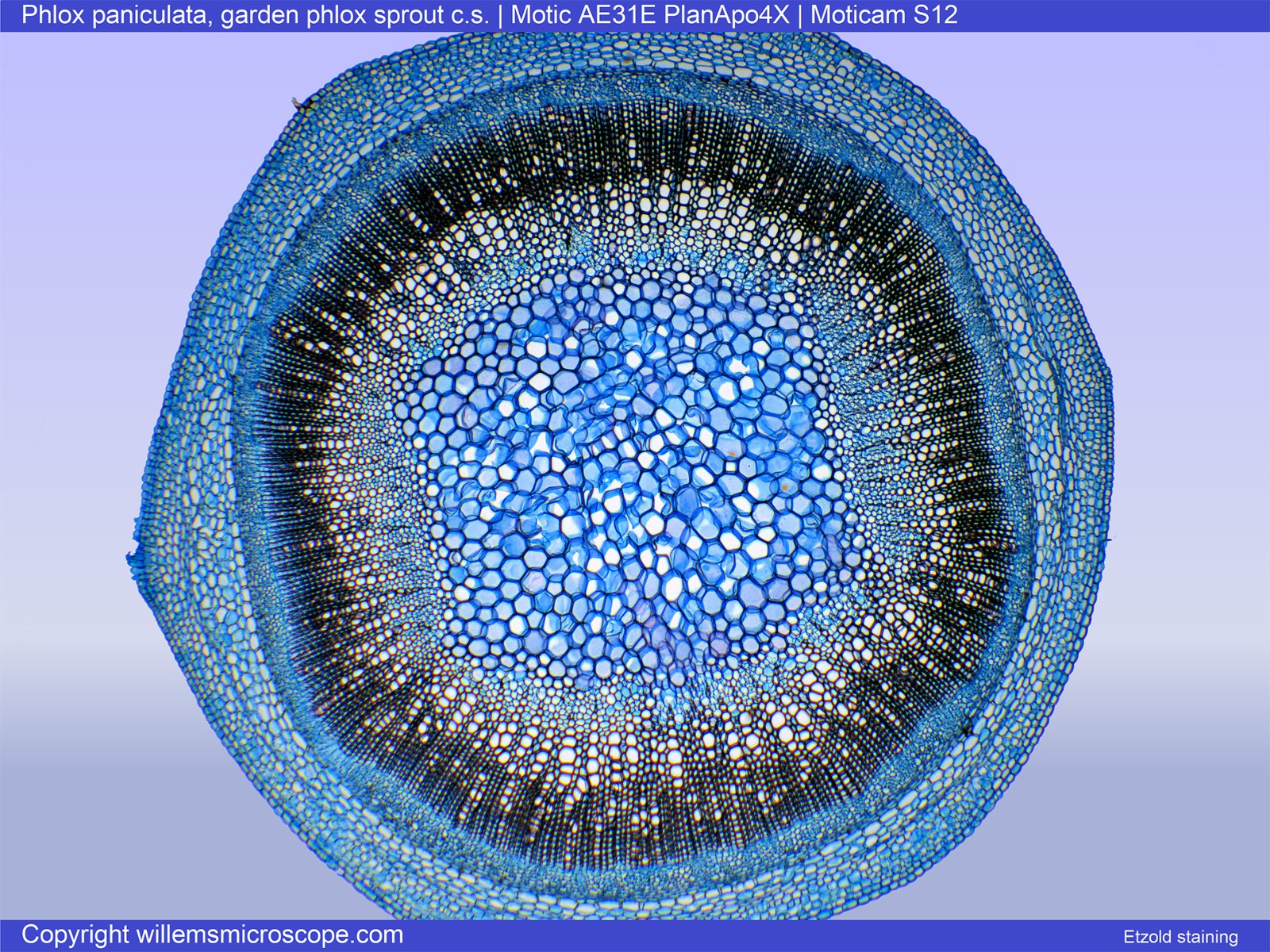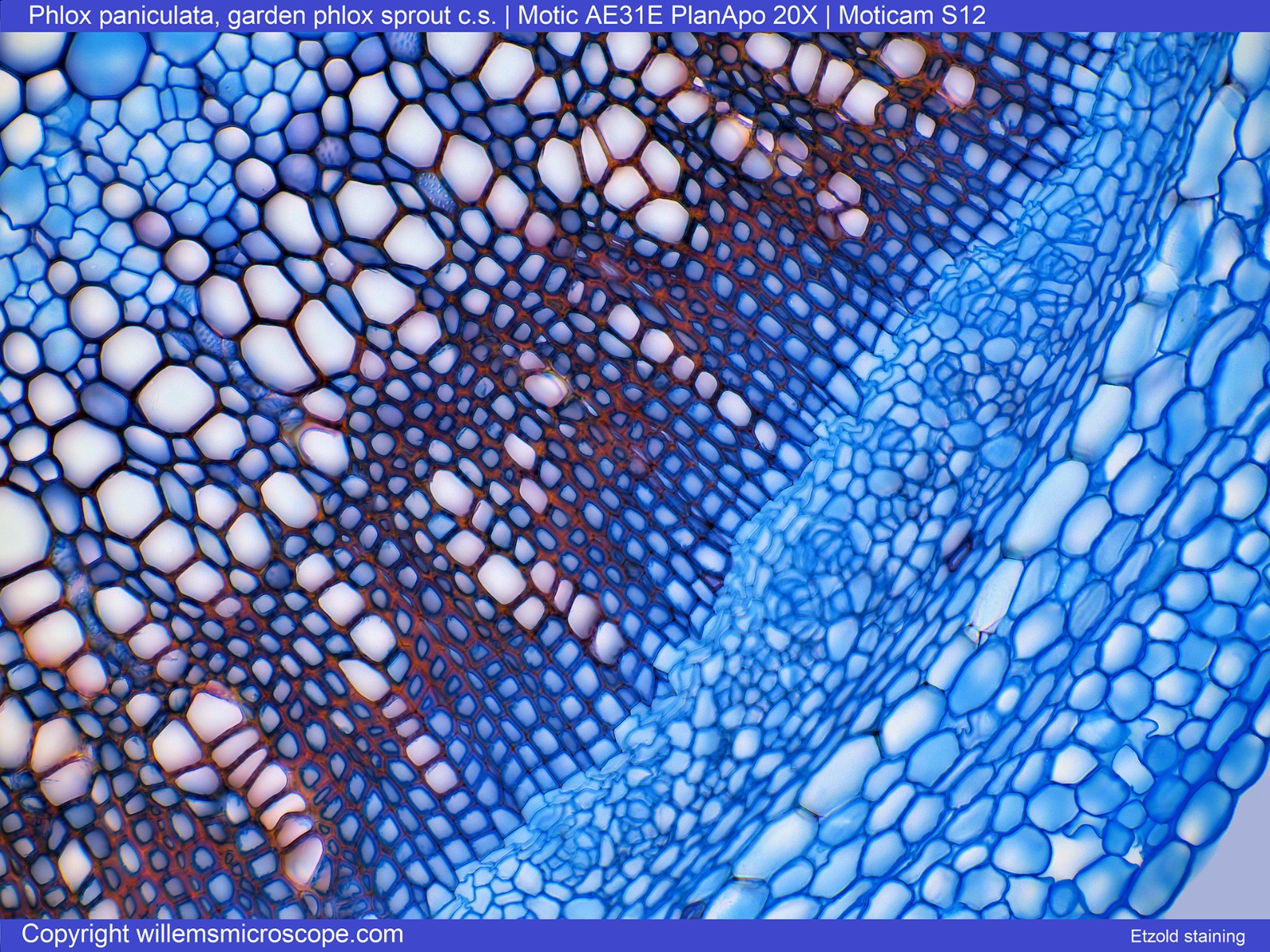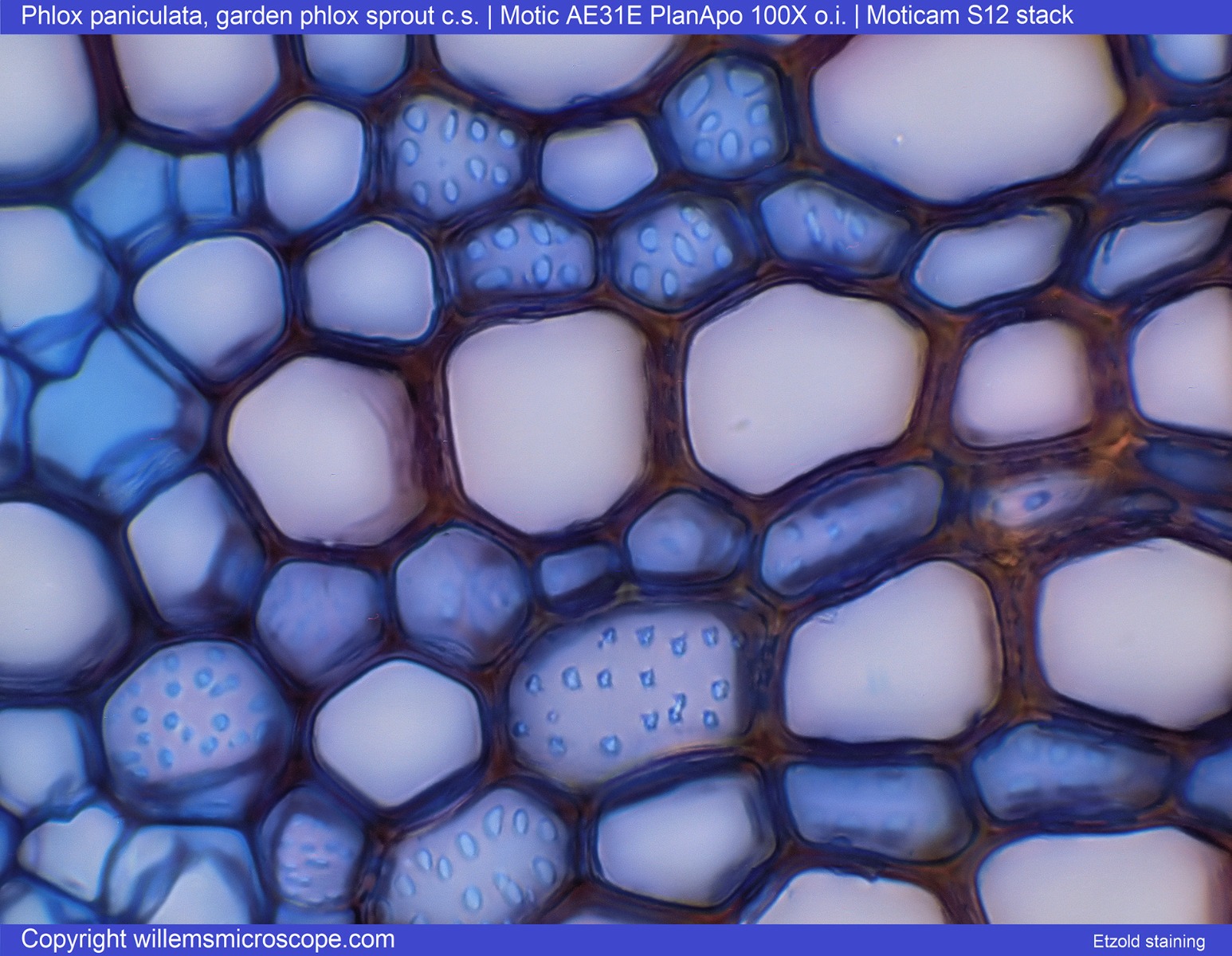The Phlox paniculata is a perennial herbaceous flower that can reach up to 150 cm in height, making it a bright and fragrant addition to landscape designs. These flowers are beloved by flower growers, florists, and landscape designers for their rich palette of colors and various varieties. The flower got its name in Greece, where it was associated with a flame. This is because the "precursors" of modern phlox were distinguished by a bright red color.

Over the years, through hybridization and selection, new varieties of Phlox paniculata with unexpected flower forms and shades have been cultivated (and are still being cultivated). However, there are no yellow varieties yet. A powerful root system ensures the longevity of the plant, allowing it to adorn the garden for years. The flowering time of each flower is 7 days.


Triple Stain Etzold
The Etzold FCA triple staining method can be used to distinguish cell differences in plants. The images are showing a nice example. The Etzold Stain method is credited to Dr. Etzold.
The Etzold stain preparation
Dissolve in 1L of water:
Acetic acid (100%) 20 ml
Fuchsin (bas.) 0.1 g
Chrysoidin 0.143 g
Astral blue 1.25 g
The colour results are: non-ligneous cell walls blue; ligneous cell walls, Sclerenchyma and Xylem red; Phloem blue. For a detailed guide to this colouring, see:
http://mikroskopie-bonn.de/_downloads/Arbeitsplan_Etzold_FCA.pdf
